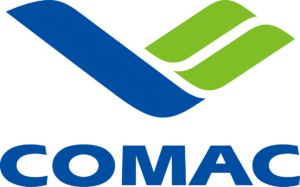Global Avionics Round-Up from Aircraft Value News (AVN)

Logo of the Commercial Aircraft Corporation of China, Ltd. (COMAC), a state-owned aerospace manufacturer.
The emergence of the Commercial Aircraft Corporation of China (COMAC) as a serious contender in the global aviation industry is triggering a tectonic shift in the development and procurement of avionics technology.
COMAC’s flagship aircraft, the C919, is spearheading Beijing’s goal of self-reliance in aerospace tech. Chinese firms like AVIC Avionics Systems, CASC, and BAIC are being nurtured to replace Western suppliers like Honeywell, Thales, and Collins Aerospace.
China is decoupling from Western avionics ecosystems and pushing for homegrown alternatives, leading to a parallel supply chain.
COMAC’s rise is squeezing major Western avionics firms in two ways. Suppliers must navigate strict tech transfer requirements to stay in the Chinese market. Also, some are reluctantly sharing sensitive tech to secure contracts, raising red flags in Washington, Brussels, and Tokyo.
The geopolitical friction is prompting rapid innovation in avionics software, cybersecurity, and data fusion by U.S. and European firms to maintain a technological edge.
Governments are increasing research and development (R&D) funding to aerospace firms, not just for defense, but to outpace China’s commercial aviation ambitions.
Global Realignment of Supply Chains
COMAC’s presence is encouraging non-aligned nations to consider Chinese aircraft, especially as they come bundled with competitive financing and alternative avionics standards. This forces Western suppliers to rethink pricing, partnerships, and interoperability strategies.
With COMAC promoting Chinese-developed avionics architectures, the risk grows of a split ecosystem. Airlines and maintenance, repair and overall (MRO) firms may have to manage dual standards, increasing complexity. Interoperability and certification across ICAO and FAA/EASA lines may become a hot-button issue.
COMAC’s C919 No Longer Just a Paper Tiger
COMAC’s C919, once dismissed as an underpowered and overpromised aircraft, is now flying scheduled commercial routes in China and being gradually refined.
Although it still relies on some Western components (like the LEAP-1C engine), COMAC is aggressively localizing its supply chain as China seeks technological self-reliance.
Backed by state subsidies, COMAC doesn’t face the same market pressures as Boeing or Airbus. It can afford to move slowly, absorb losses, and focus on long-term geopolitical goals.
As U.S.-China tensions worsen, Chinese airlines are under strong political pressure to reduce reliance on Boeing. Case in point: Boeing’s Chinese customers are refusing delivery of new airplanes built for them because of U.S. tariffs, the company confirmed in late April.
Boeing’s Chinese customers are refusing delivery of new airplanes built for them because of U.S. tariffs.
COMAC benefits from protectionist policies and state-directed procurement, ensuring a growing share of the Chinese aviation market, the world’s second largest.
Western sanctions or export restrictions may further force China to accelerate domestic aviation production, ironically strengthening COMAC.
COMAC isn’t just building airplanes—it’s catalyzing a global avionics revolution. Western firms are responding with innovation, but the long-term balance of power in avionics will hinge on who controls the software, standards, and data flows of tomorrow’s aircraft.
This article also appeared in our partner publication, Aircraft Value News.
John Persinos is the editor-in-chief of Aircraft Value News. You can reach him at: jpersinos@acccessintel.com